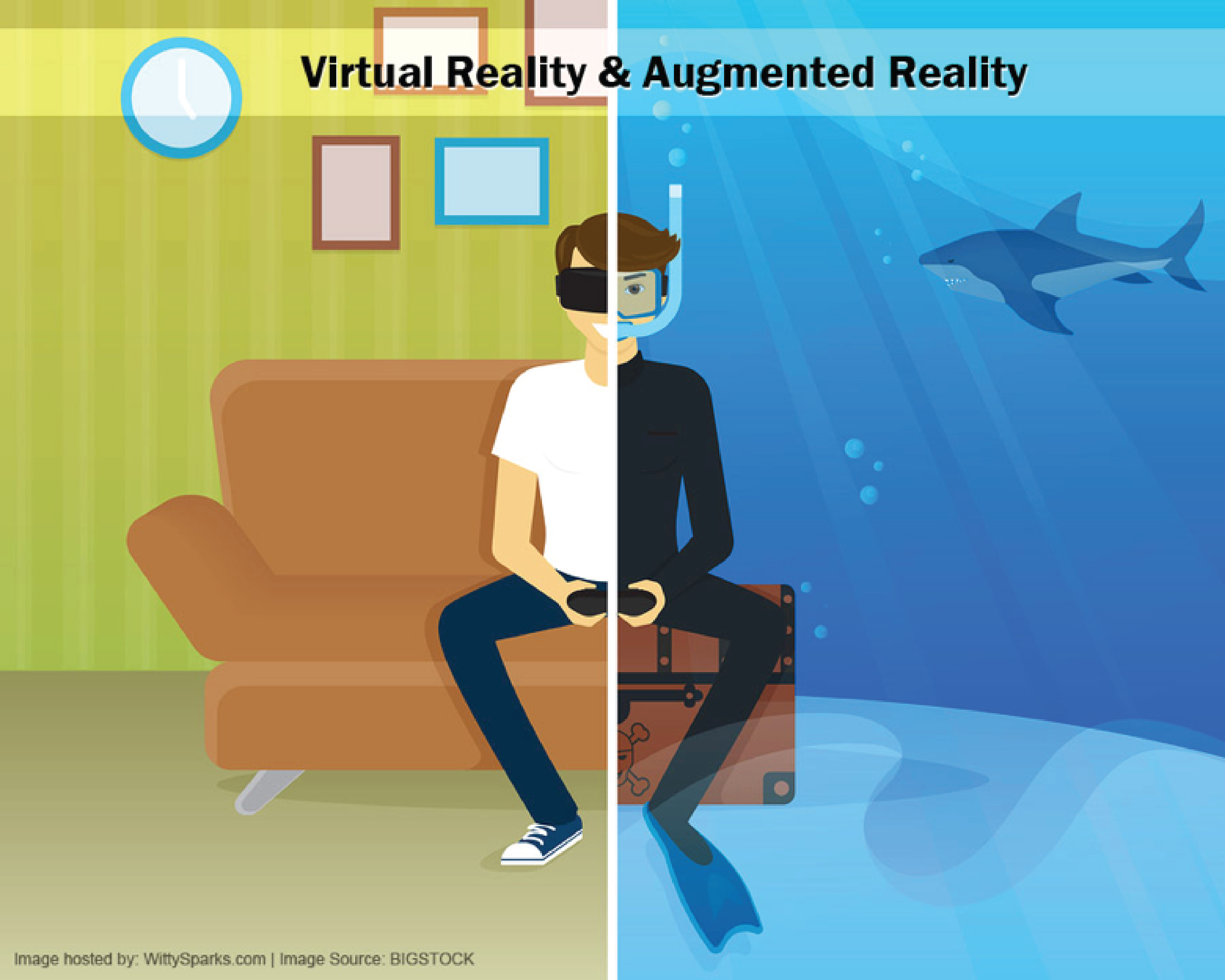SATURDAY JULY 16, 2016
Remember the Nintendo Virtual Boy from the 1990s? It was a noteworthy attempt at virtual reality back then. It failed, and Nintendo didn’t try to work things through. Perhaps it didn’t see the technology making a concrete come back in the future. Today, Augmented Reality has had more acceptances in the consumer space with applications such as the Google Glass while Virtual reality is climbing up the league with market utilities and trends. These technologies might seem overwhelming to understand at first for which we have broken it down here. Have a look –
-
VR is more immersive than AR
With AR, the users are in touch with the real world at the same time interact with virtually created objects around them. Where as in VR, the user is engrossed in a virtually crafted world, isolated from reality. Both are similar in creating an immersive experience for the user, with dissimilar approaches.

-
Let’s talk science
Augmented Reality enriches experiences by adding virtual levels such as sensations, graphics or images as a new layer of interaction with reality. Inversely, VR crafts a world which is plain graphical and digital. AR and VR use technology that is converse reflections of one another to engulf the user in a particular experience. It plays with the perception of the user’s real time presence. AR uses digital enhancements to an existing reality to make it more meaningful whereas VR recreates a real – life setting with computer generated layers.
-
Headset or no headset?
Augmented reality is being used in mobile devices such as tablets, laptops and smart phones that alter the way real world and digital graphics interact and intersect. We have witnessed the rise of AR hardware device such as Google Glass as Microsoft gears up to launch similar wearable computing devices. Whereas Virtual Reality is delivered by a head – mount or a hand – held controller. These devices like Facebook’s Oculus, allow the user to control their vision and navigate their actions in the virtually stimulated world. It can create an imaginary reality for entertainment, gaming and can also assist in creating real life environments in which people such as soldiers can practice difficult situations.

-
Where are Ü now?
The other major difference between AR and VR is the ability of the two technologies to transpose the user. With the closed headsets, VR blocks out the real setting by bringing them to someplace else. Whereas AR is used with mobile devices which and is developed into apps which fuses digital elements into reality in a way that it compliments each other, at the same time can be easily distinguished.
-
VR is for storytelling – AR is for real
With VR, it is possible to get complete focus of the user on the content. There are no distractions; no checking messages or updating the social media. It is the most immersive method for storytelling. As it cancels out all the friction around, it has an impact on our head, heart and gut. Augmented Reality adds graphical layers to our understanding in real – time. This has been demonstrated in Hollywood movies such as Avatar, Iron Man and others.
AR and VR both are set out to make it big considering how they are speedily changing the norms of the tech industry. Virtual Reality is heading strong with the sort of content it has been used to create and the hardware advances that have excited the tech savvies. Brands, news organizations, movie studios, gaming companies are all flocking towards stimulated reality. It is time we moved a notch higher as well.

